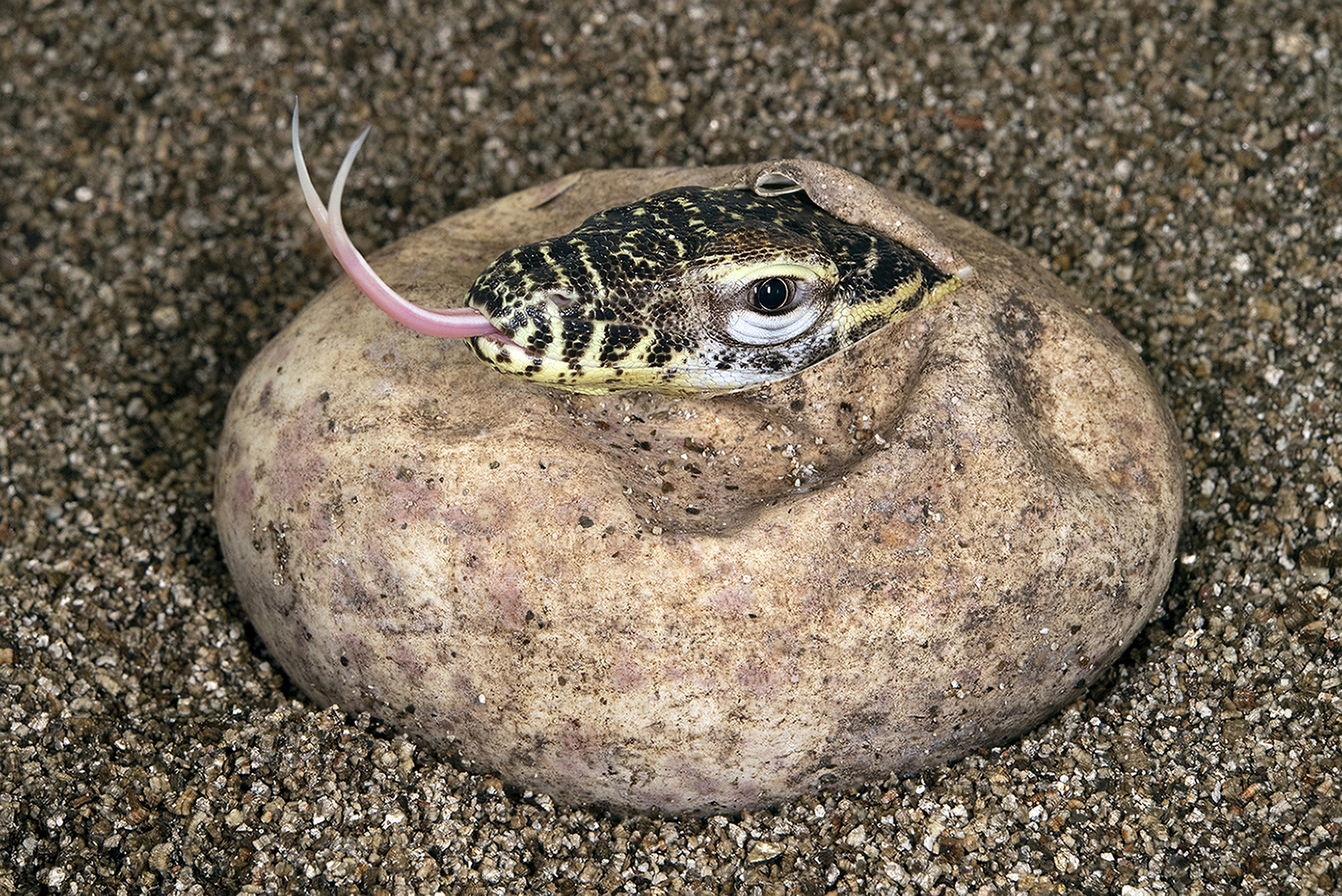
December 9, 2021
How to Hatch a Dragon
- as seen by -
 Don Boyer
Don Boyer
On November 3, 2021, our Komodo dragon eggs began to hatch after a 212-day incubation. This rare event is the first successful reproduction of Komodo dragons (Varanus komodoensis) at the Wildlife Conservation Society’s Bronx Zoo World of Reptiles.
The first dragon pipped its egg by using a special egg tooth on the tip of its snout. The dragon did not emerge right away – at times just an eye was visible through the slit openings in the egg. Sometimes the head (above), neck, and front limbs emerged only to retreat into the egg. Within 20 hours, the neonate dragon fully emerged.
It was a beautiful foot-long lizard with brilliant yellow and orange coloration on a darker background. A large umbilical stalk protruded from it belly. This had been its connection to the yolk sac nourishing it through its long development. The young dragon was gently washed off removing the residual egg fluids and incubation medium. It was then transferred to a small enclosure and placed on moist paper towels until the umbilical stalk detached over the course of the day. Once the umbilical scar was closed, the dragon hatchling was transferred to a larger space with lots of branches and slabs of bark.
To the delight of our staff, a total of six healthy dragons emerged from our clutch and are being reared at the zoo.
In the wild upon hatching, neonate dragons head for a life in the trees for the first several years and for good reason, to avoid the numerous predators including other larger dragons. Their highly complex color pattern serves them well, being both cryptic and disruptive, making them less obvious to predators. The young dragons are well suited to an arboreal life with their light weight, long slender bodies, and long tails. Almost immediately, they begin hunting insects and other small lizards.
As the species coordinator the AZA Komodo Dragon Species Survival Plan, I work with colleagues to maximize genetic diversity within the North American dragon population. The parents of our hatchlings are a recommended breeding pair. These young dragons will eventually join the AZA zoo population and be integrated into the breeding population.
Nikon D5




Leave a Comment
wendy e townsend
December 10, 2021 at 6:02 pm
Welcome, little ones! What a blessing. It’s been a great day for lizards –the Jamaican iguana has just been green-listed by the IUCN.
Pingback: See pictures of baby Komodo dragons being born at Bronx Zoo | Afronews1.com
Pingback: See pictures of baby Komodo dragons being born at Bronx Zoo – Munaf Sheikh